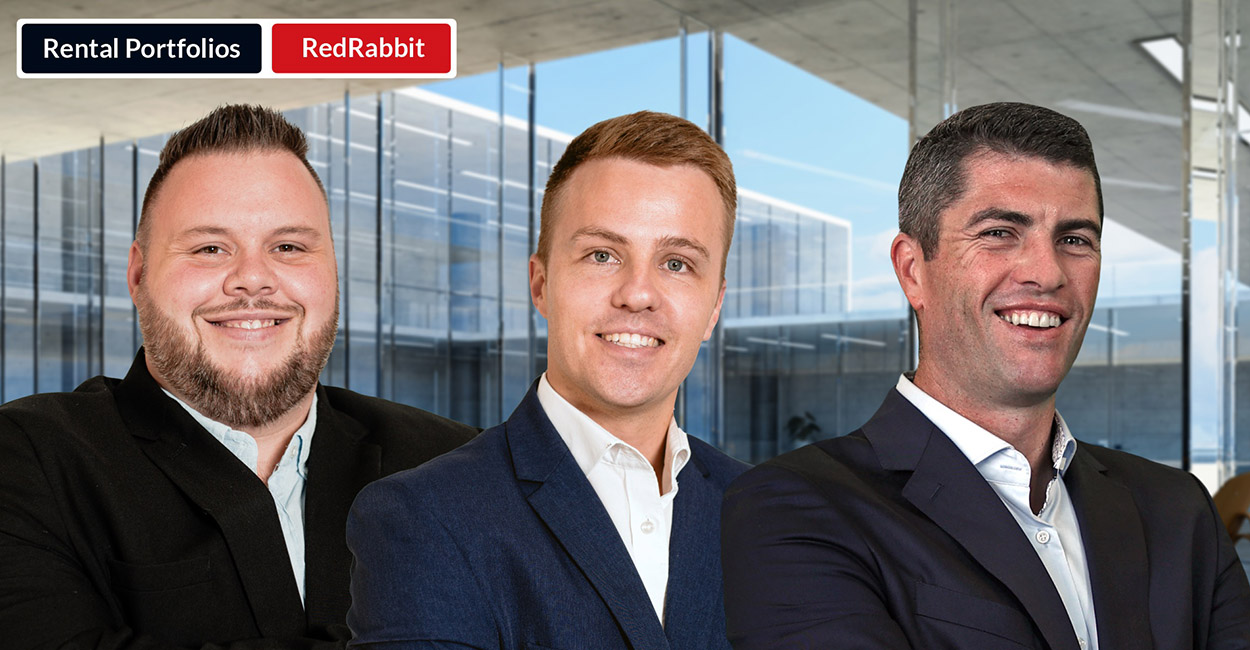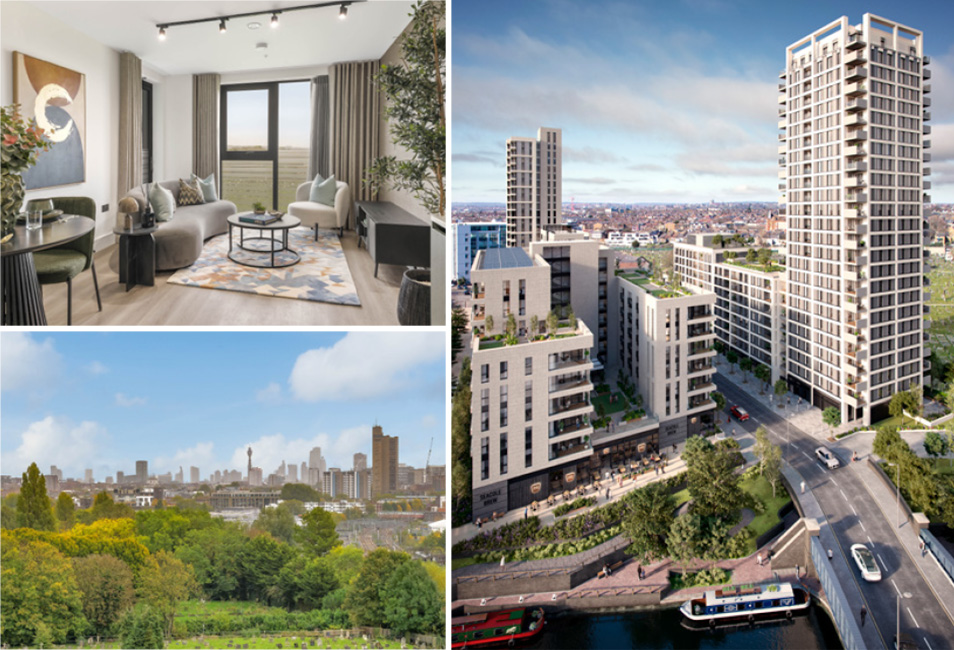MAIN IMAGE: Kobus Lamprecht – chief economist at Rode Publications and Media, Justin Blend – director at Africrest Properties, Greg Dart – co-director of High Street Auction Co
Senior writer
It is impossible to ascertain how many commercial buildings are being converted into apartments across the country’s major CBDs. What we do know, however, is that developers are active, as indicated by FNB’s Property Broker Survey for Q1 & Q2 2025, where nationally 19,3% of buyers are acquiring office assets with the intention of converting to residential or mixed-use.
The highest conversion rate, ‘intent’, is in Johannesburg at 38.1%, Nelson Mandela Bay at 17.1%, Tshwane at 14.9%, Cape Town at 4.6%, and eThekwini at 1.3%. According to Rode Publications, which specialises in property market research and analysis, there are encouraging signs of a decline in the oversupply of these types of buildings: the national average A+, A, and B-grade office vacancy rates have dropped from nearly 18% in H1 2022 to 12.8% in Q1 2025.
Opportunities still abound, but whether this is the golden wand that will magically set right some of the imbalances in the affordable housing sector is a bit of a stretch. As pointed out by Kobus Lamprecht, chief economist at Rode Publications and Media, conversions of this nature “do take a long time.”
The case for converting from commercial to residential
He is referencing a combination of factors such as complex zoning regulations and the limitations applicable to the existing infrastructure. However, with a significant housing backlog and the need to revitalise decaying CBD areas, it makes sense, even financially, given the costs of construction, to use what already exists rather than knocking down or starting from scratch.
“The sharp decline in newly constructed office buildings and the conversion of older office buildings are the market’s mechanism to restore equilibrium to the office market,” says Lamprecht. He mentions that “conversions of office property have historically mostly occurred in the CBDs of Johannesburg and Durban, which–”together with ageing–”have led to a sharp decline in the quantity of marketable office space in those nodes. However, despite this, vacancy rates remain high, and we know why.”
“Since the Covid pandemic, conversions have increased in decentralised nodes, but it has been mostly focused on Gauteng (Johannesburg in particular), which continues to battle high vacancy rates. Note too that all offices cannot be repurposed as the design of the building plays a role, which limits this impact.”
Africrest Properties is one of the most well-known and prolific property developers in the country, and it also operates in the space of commercial-to-residential conversions. It currently owns 4,500 apartments, which are expected to increase to 8,000 by the end of the year. Director Justin Blend speaks to the points that Lamprecht has raised.
“Yes, it does take some time, around three to four years from beginning to end, to convert an office building to residential. The number of buildings that one can convert to apartments is not as many as some think, as it is difficult to find a building with the correct zoning and floor plates in the right area and at a price that will give an appropriate return.”
Even when finding a building that ticks those boxes, there are other factors to consider. For Africrest, this means finding buildings that are close to major work nodes, with features such as opening windows, and, of course, located in safe areas, says Blend.
“We also only rent our apartments; we do not sell them. We therefore build high-quality estates, as we will always be responsible for the maintenance costs. We control the entire environment and therefore strive to ensure that all residents are happy, unlike sectional title landlords who only worry about receiving rental from their particular tenant to pay their bond. As we own the entire property, it is in our interest to worry about the majority of the tenants being happy.”
High Street Auction Co. is yet another company giving new life to old buildings, but through its auction facility. Co-director Greg Dart notes that not only does an auction platform unlock liquidity in the marketplace for private investors or state-owned enterprises (SOEs) with large property portfolios that no longer align with their future business strategies, but it also provides an invaluable foundation for future development and redevelopment.
Dart notes that the commercial property market is still oversupplied, with market forces now driving the need for retrofitting office spaces. “There is a need for capital allocation for asset repurposing. Converting underperforming office stock into alternative uses will ultimately remove obsolete inventory and tighten the market.
“And, it is better to repurpose abuildingthan build from scratch. Innovating so that existing buildings’ lives can be extended saves on costs, time, and energy and contributes towards sustainability. Construction time can be reduced, and challenges such as zoning and building restrictions diminished.”
The latest trends in this sector favour mixed-use developments that minimise travel costs and congestion, which Dart attributes to the rise in mixed-use developments due to urban migration, lifestyle integration, and a continued remote work culture. “The growth of live-work-play precincts reflects both the diversification of income streams (residential, retail, office) and their strong appeal to tenants seeking lifestyle and flexibility,” he says.
Dart also acknowledges that there is a compelling case for investment in commercial-to-residential conversions–”especially those with an affordable housing component. “In fact, many local governments are actively seeking opportunities to partner with developers to leverage inner-city residential projects to address growing social housing backlogs and urban decay in city centres.”










